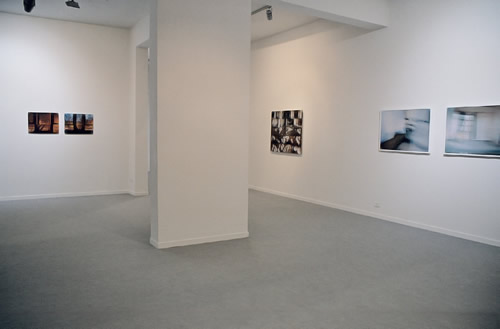DE SOTO, EXPLORE YOURSELF
(Emily Dickinson)
Works by: Renate Aller, Stefania Balestri, Connie Dekker, Martina Della Valle, Rachel Morellet,
Elisabetta Scarpini, Donatella Spaziani, Margherita Verdi.
December 17, 2006 – March 5, 2007
Inauguration: Sunday 17 December 11.00 – 19.00
In the exhibition spaces the creative paths of eight Italian and foreign artists of various generations alternate
photography express themselves, their own life experience, lingering with the gaze to grasp the places and the
presences of experience, nature, the landscape, as interior spaces.
The title of the exhibition which corresponds to the first verse of the poem of the same name by the American Emily Dickinson invites to
“Deepen” the view into one’s own universe and, at the same time, expresses the difficulty of knowing each other, of digging into the whirlpool. AND’
an exhortation apparently addressed to Hernando De Soto, a Spanish explorer who lived in the times of conquest
of the territories of Latin America, but really aimed at the human being. The commitment to pursue this is perceived
great goal, also considering the impossible or utopian claim to fully come to know one’s self.
The investigation into the “unknown continent” never ends.
“The unconscious – writes Johann Paul Richter – is truly the largest field of our mind, and, precisely because of this
unconsciousness, it is interior Africa, whose unknown borders can extend very far “.
Traveling through immeasurable territories and spaces in which to perceive the reflection of ourselves, the outside as a mirror of the inside,
in dialectical comparison, one projection of the other.
Renate Aller focuses her photographic eye on the sea, always taken from the same point of observation, calm
in the night or bright during the day; a magma that spreads out against the earth and melts into the sky, every time
different, like the moods of the self, deep and infinite, in which to find oneself to get lost again and then resume the journey of
Research.
Stefania Balestri’s “rooms” conceal and at the same time reveal clues, suggest openings and veil intimate secrets,
they are internal to one’s own experience that urge one to dig into the depths and to feed one’s gaze to insinuate oneself into
meanders of subjectivity, through an image that seems suspended in duration as interior time.
Connie Dekker’s postcards refer to the places of her existence, the country of origin and the one in which she stayed
for years, as spaces of memory between which to establish a unique and continuous bond, made up of memories, of affections, of
nostalgia, diary of a journey that remains unlimited in consciousness.
Martina Della Valle’s inner eye turns, like an instant flashback, to childhood, to probe the territories
of the unconscious, through hiding places, found or created by children, in the desire to isolate themselves for a moment from the world of
others, stay silent so as not to be discovered, soliciting research and the curiosity to know.
Rachel Morellet proposes an affective dialogue that lasts over time, a friendship that goes beyond all boundaries,
indissoluble beyond geographical distances, as if to join different points in one’s inner landscape to build one
emotional map.
This is how Elisabetta Scarpini tells about herself in the photographic sequences, she traces her own mark as in the embroideries
expanding the time of consciousness, she gives shape to a writing that outlines a presence between consistency and evanescence e
which reveals a state of expectation and a desire to rediscover oneself as an identity beyond fleeting instantaneity.
In Donatella Spaziani’s self-portraits the human figure assumes natural or forced positions in an attempt to find one
intimate dimension in closed, anonymous spaces, where windows become the only gates, borders between the outside and the inside in
whose gestures, body movements testify to an urgency, are expressions of an inner dynamism, of an excavation
psychological at the roots of being, on the verge of rarefaction and loss.
The present objects of the absent subject that appear in Margherita Verdi’s works allow us to capture the signals of
an internal time, they become almost “heart flashes” that allow you to recover the thread of memory, of
emotions, of magical atmospheres, like instant illuminations to be relived, which re-emerge from the darkness of the depths.
An exhibition, therefore, in which the works alternate as interior rhythms, which suggest to wander with the gaze for
get inside, to discover the essence in the appearance of the image, to register yourself over a long period of time,
incommensurable, of personal stories, of lived scenes, of emotional pauses, compared to the convulsive rhythms of the world
technological.
Information: Tel. And Fax 0571/73619; e-mail: a.scappini@virgilio.it To arrive: S.G.C. FI. PI.LI. Empoli Ovest exit;
FS: FI – PI; FI – YES; Empoli station


